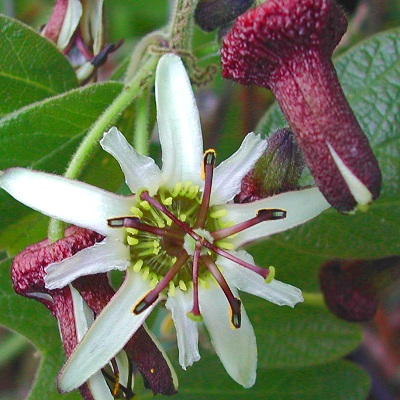Germinating the seeds
When to plant -- Plant your seeds when you receive them for the best results. Getting started -- Soak your seeds in a cup of water for 24 hours (not more than 2 days). Soil -- Use a well-draining soil mix. A typical mix is 2 parts potting soil to 1 part perlite or coarse horticultural sand. An alternate mix is equal parts of coir fiber and perlite, with some granular fertilizer mixed in. Pot size - You may use small pots or cups about 3 inches tall (7 cm) and 2 to 3 inches (5-8 cm) wide. The containers need drainage holes. Fill the pots with the soil mix, place a seed on top, and cover with about 1/4 inch (7 mm) of soil. Add water until the soil is evenly moist (but not fully saturated). Until the seeds sprout, ensure that the surface soil doesn't dry out. If you place the pots in a plastic container or bag to maintain moisture, leave it open slightly to allow fresh air to enter. Temperature -- Aim to keep them between 68 and 77° F (20-25°C) most of the time. Avoid letting them get above 82° F (28°C) or below 65° F (18°C) for more than a few hours a day. I recommend placing a minimum/maximum thermometer near the pots. They tend to sprout at various times, usually between 1 and 3 months. Lighting the seedlings -- Once your seeds sprout, move them to a bright spot away from strong sun. While they are young, you may use a bright LED or fluorescent lamp kept 3 inches (8 cm) away (See: "Growing indoors with LED lights"). Watering: Once the seedlings are 3 weeks old, you may allow the surface soil to dry out, but aim to keep the rest of the soil evenly moist most of the time. Never let it dry out completely, but also don't keep it constantly saturated. Growing on... Climate -- Adult plants seem to prefer temperatures between 40 and 85°F (5-29°C), with cool nights. It might be able to tolerate a light frost, but i recommend protecting it from freezing temperatures. Over about 40% humidity is recommended. Lighting -- It prefers part-sun, with some protection from strong afternoon sunlight. It can handle full sun in cool, coastal areas. Fertilizing -- For the first 8 weeks, feed weekly with a small amount of dilute (1/8 strength) liquid fertilizer. Hydroponic fertilizer is ideal for this, because it is easily absorbed and contains all essential nutrients. After 2 months, you may switch to a granular fertilizer that contains micronutrients. Or continue feeding weekly with some dilute liquid fertilizer. Repotting -- Once your seedlings are at least 3 inches tall (8 cm), you may repot them to larger containers about 1 pint (1/2 liter) in size. Repot gently and avoid letting the soil ball break apart. Water the soil before repotting to keep the soil together, and shade from sun for a week after repotting. Repot again after 4 to 6 months. The final pot size depends on how large you choose to let it grow. A full-size, unpruned plant can live in a 10 gallon (40 liter). You may prune your plant to any size that is convenient. If you have any questions or problems, please contact me. Have fun growing them! - Jeff Strange Wonderful Things
|
|||||||||


